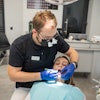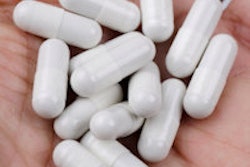
About 1 in 4 people abuse drugs and alcohol, according to a presentation at the recent California Dental Association's CDA Presents 2015 meeting in San Francisco. The speakers addressed how dental professionals can help patients understand substance abuse.

Presenters Patrick J. Sammon, PhD, and John Lindroth, DDS, covered patient education, prevention, screening, and treatment. Addiction can be harder to identify and treat than other illnesses, making it crucial for dentists to be vigilant, they noted.
"Addiction is a debilitating and chronic illness. It's a mental disorder that can't be addressed in the same manner as any other medical condition," said Dr. Lindroth, who is the director of the University of Kentucky (UK) College of Dentistry Urgent Care Clinic and serves in the Orofacial Pain Center. "If they [have diabetes], you want to make sure they're stable, controlled. If they're addicted, you want to make sure they're stable as well."
Educate
Dental professionals have an important role in drug abuse education, because they spend more time with patients than any other healthcare professional and because dentists prescribe opioids. This is especially true for teenage patients, since 90% of adults with substance abuse disorders started using drugs and alcohol before they turned 18.
“Addiction is a debilitating and chronic illness. It's a mental disorder that can't be addressed in the same manner as any other medical condition.”
"Kids don't have a glass of wine or a bottle of beer at a football game. ... They're using them to get blasted," said Dr. Sammon, a professor emeritus at the UK College of Dentistry Department of Oral Health Science. "If these kids continue, they're going from high risk to misuse to addict."
Prescription drugs are particularly popular, because they are legal when prescribed, easily obtainable, inexpensive, and thought of as safer and nonaddictive compared with other illicit drugs. Opioids in particular are largely misused, and Dr. Sammon cited that 60% of people report misusing codeine and 67% report misusing hydrocodone.
One simple way to help prevent substance abuse is to educate patients. Professionals can inform patients that drugs change the brain and that it is illegal to take prescription drugs without a prescription, Dr. Sammon said. He recommended visiting drugfree.org for specific resources and posters.
Prevent
While opioids can help reduce pain, often a combination of other drugs can produce comparable results, according to the presenters. Citing a review, Dr. Lindroth noted that no drug produced high levels of pain relief in all patients, and even the most effective drugs often failed to work on half of patients. He regularly prescribes his own patients a combination of ibuprofen and acetaminophen.
"Simply combine different analgesics that work differently. By doing that, you get a resulting synergistic effect," he said. "It's also been shown to reduce opioid consumption."
If opioids are prescribed, they should be clock-regulated, according to Dr. Lindroth. Doing so prevents delays in receiving the medication, provides timely and effective pain relief, and is dependent on time, not symptoms. Also, providers should be cautious and prescribe minimum doses of opioids, he noted.
Screen
Dr. Sammon made it clear that dentists have patients who are addicted to drugs and alcohol within their practice. In the general population, 28% of people abuse drugs and alcohol, and 9% are addicted, he said. However, substance abuse is associated with poorer oral health, so it is likely that there is a greater percentage of addicts who visit dental practices.
To help effectively screen patients, providers should ask about risk factors, especially the age of first use, because young brains are still developing and are more susceptible to alcohol and other psychoactive drugs.
Other risk factors for abuse and addiction include the following:
- Family history of drug or alcohol abuse
- Family conflict or stress
- Lack of involvement in school or the community
Dr. Sammon highly recommends using a prescription monitoring program to identify patients who visit multiple doctors for opioids. Drug abusers typically use four or more prescriptions in four or more pharmacies over three months.
"Do your job. Do a thorough medical history," Dr. Sammon said. "You can get a report back on a patient, finding out what controlled substances they're using, electronically, in a matter of a minute."
However, not every state has a program, and in some states, such as California, only a dentist and not staff can use the program. The systems may even be underutilized. Out of a room full of a couple hundred dental professionals at the CDA meeting, only four used the database.
Finally, providers should ask more thoroughly about drug history, including frequency and quantity of use, according to Dr. Sammon. Questionnaires can also ask the following:
- Whether patients have felt they need to cut down on drug or alcohol use
- Whether patients have ever used first thing in the morning to steady nerves, get rid of a hangover, or get the day started
- If the patient is recovering from alcohol or drug addiction
- If they have used illicit drugs for recreation more than five times in their lifetime and the time of last use -- if they have used more than five times in the past year, require more extensive assessment by a drug counselor
The second part of this series will run tomorrow, focusing on interventions and treatments, along with involving the patient in the pain-management process.



















